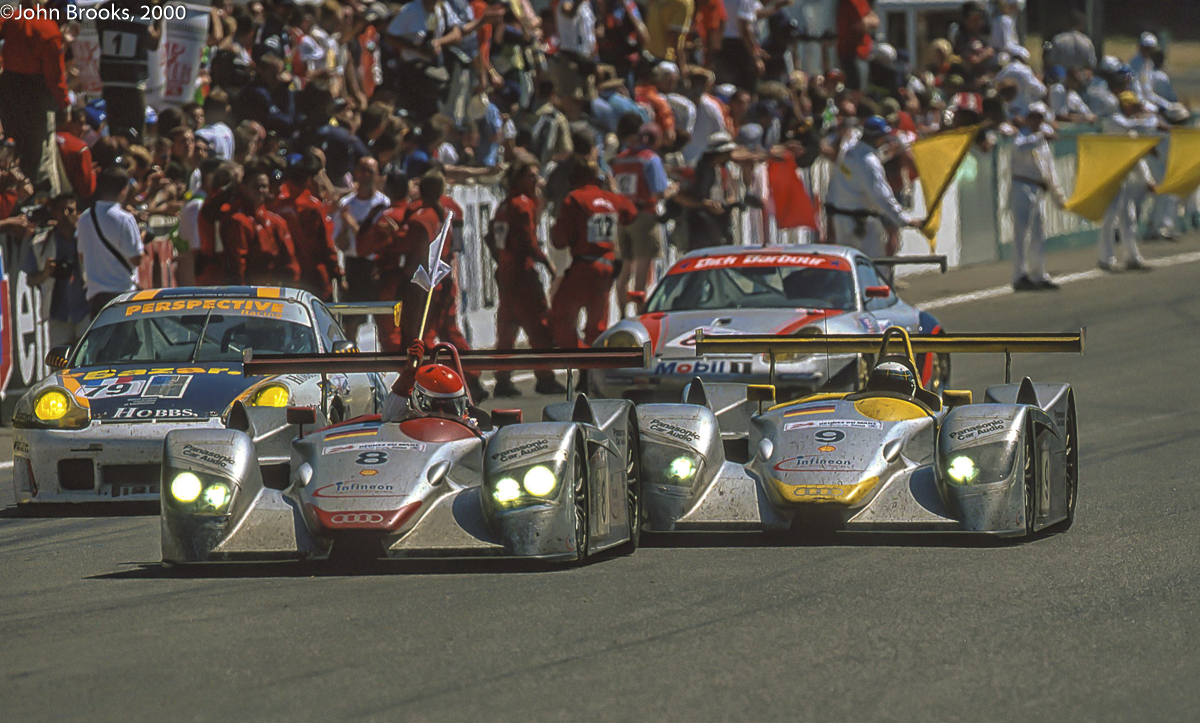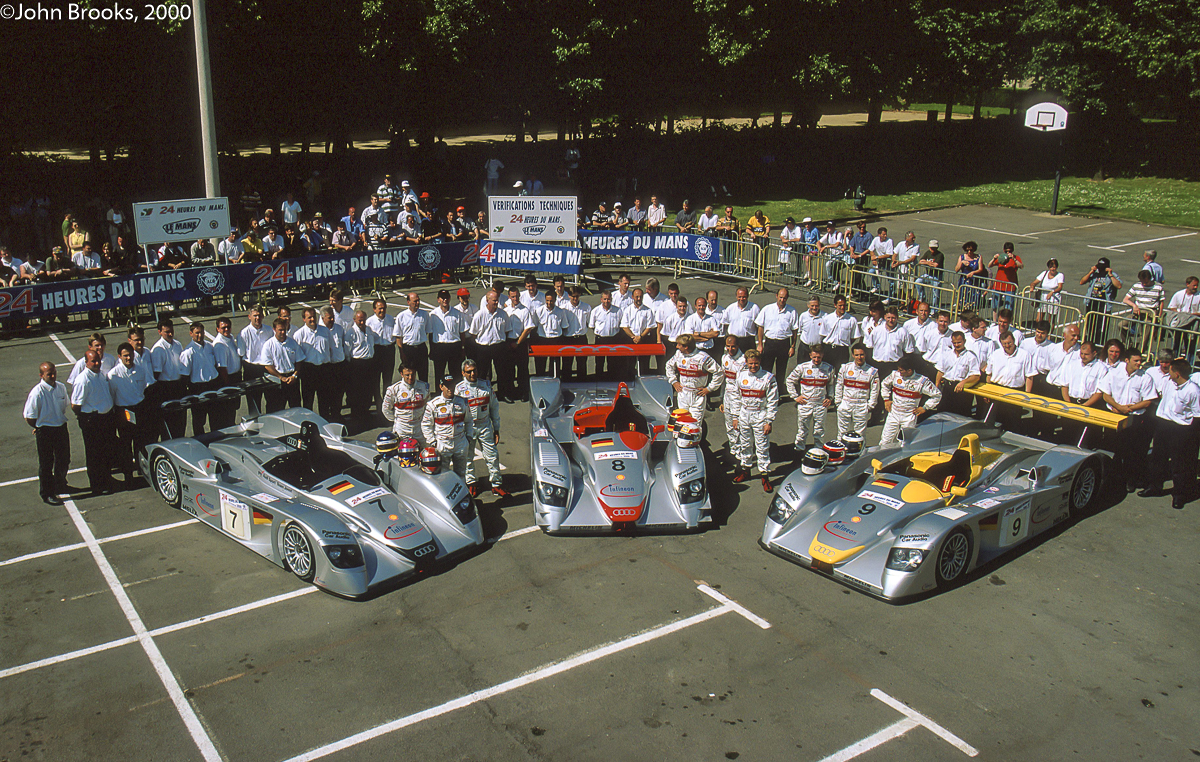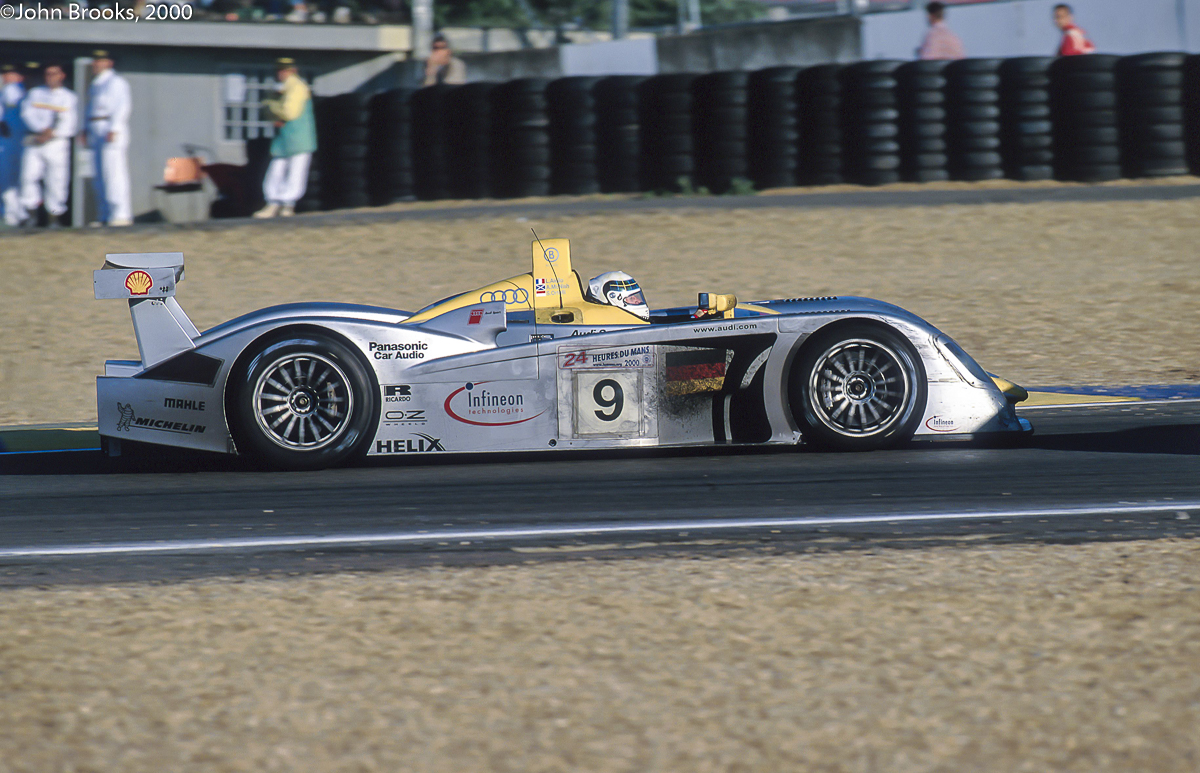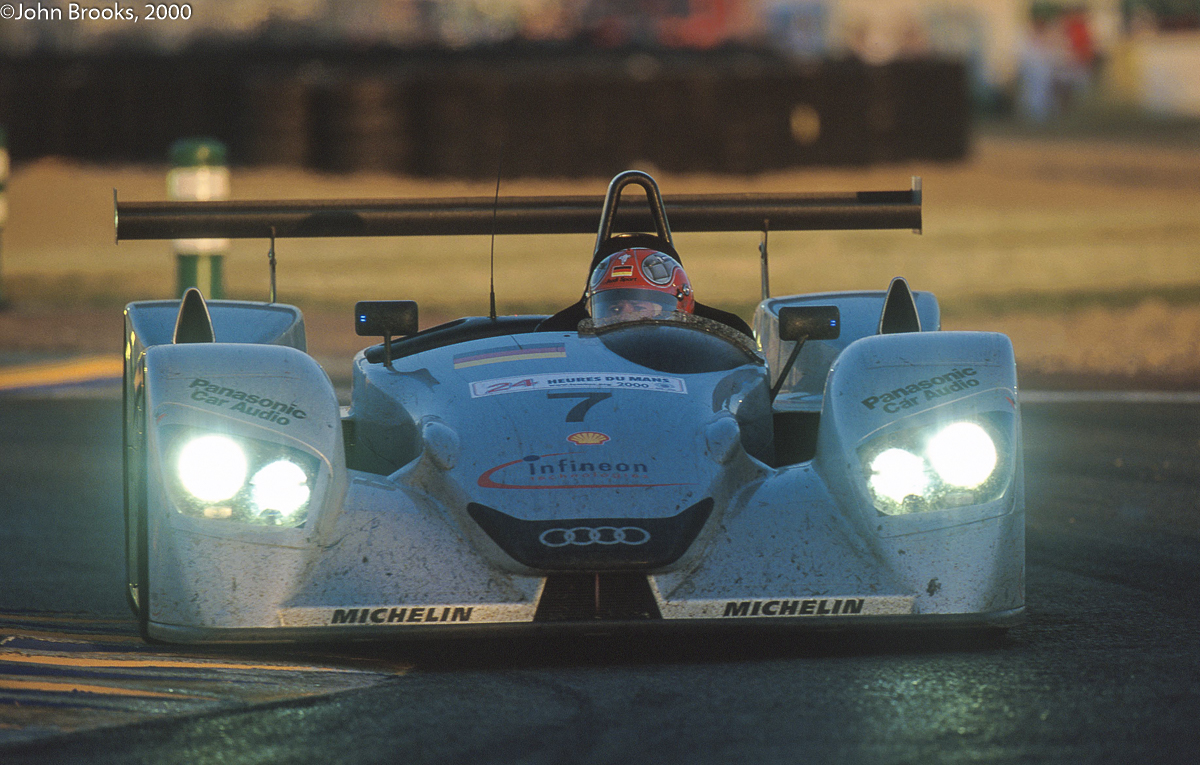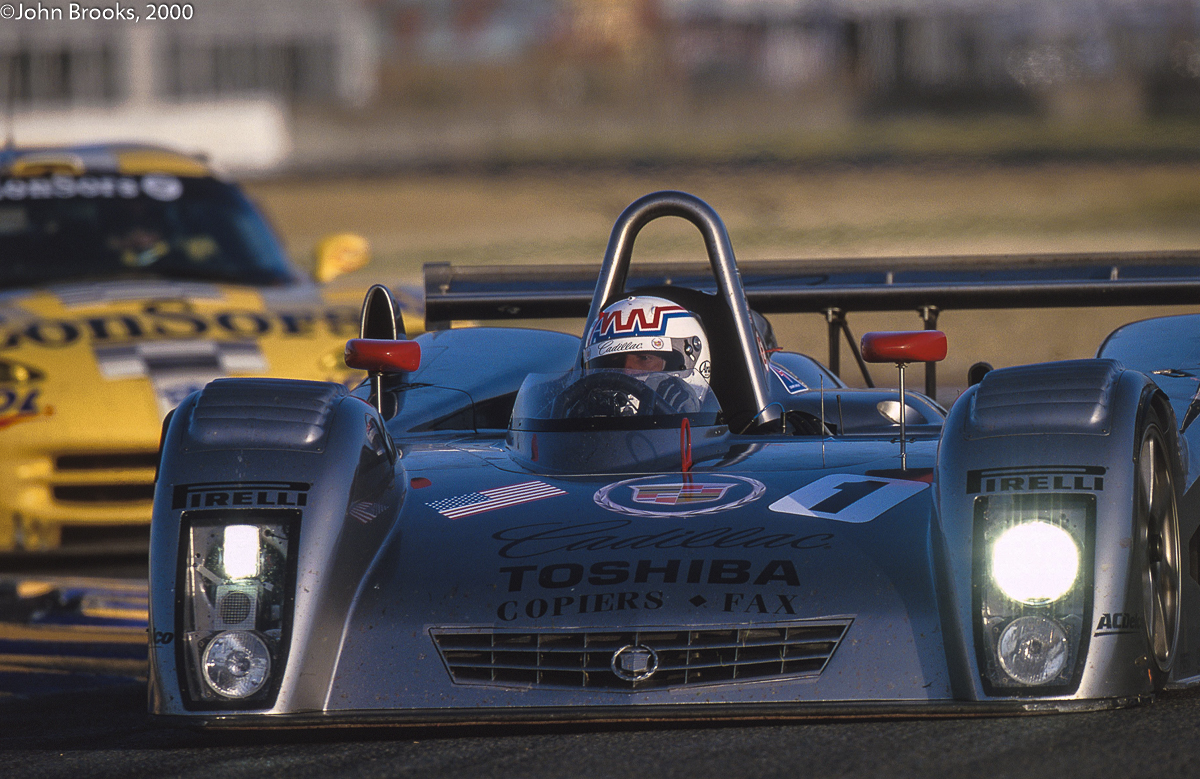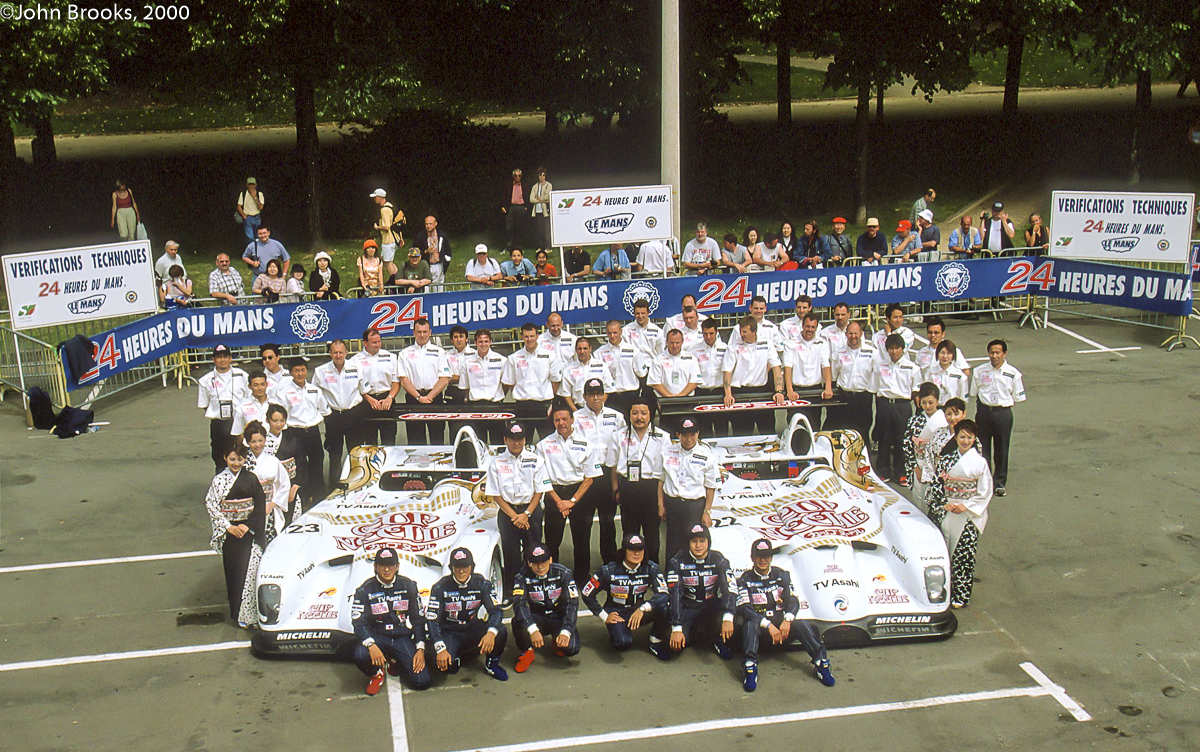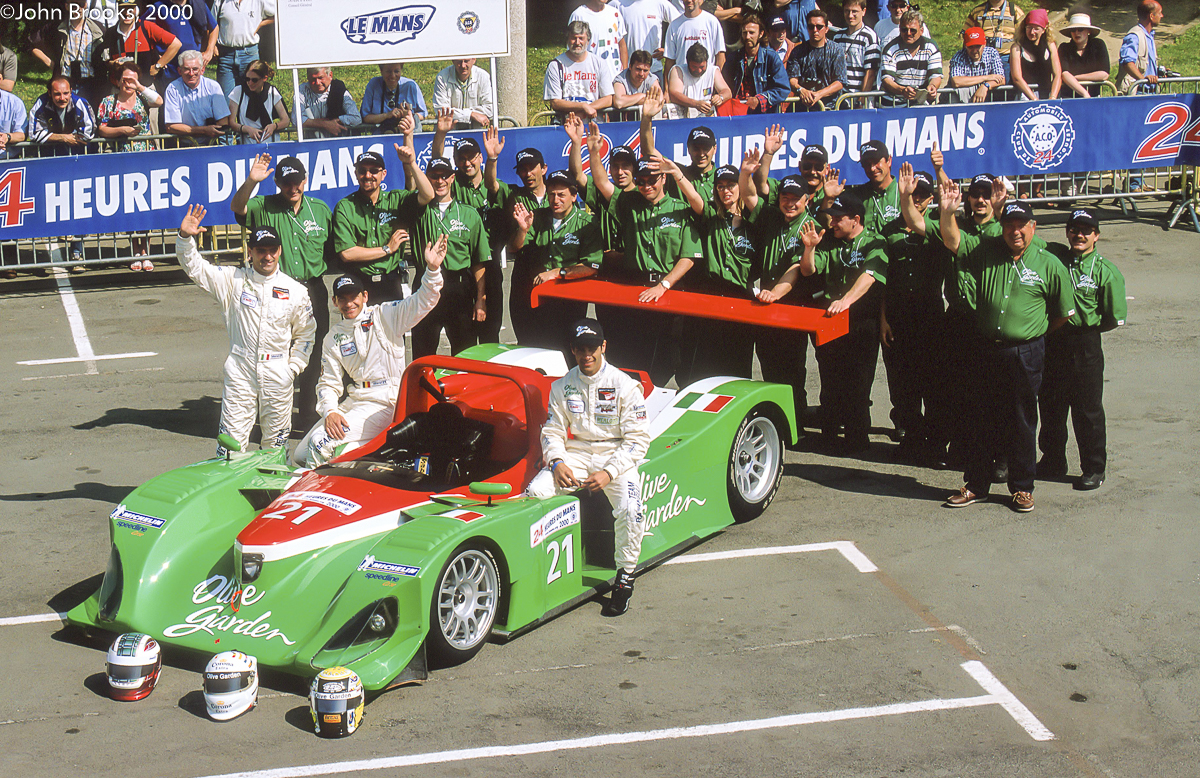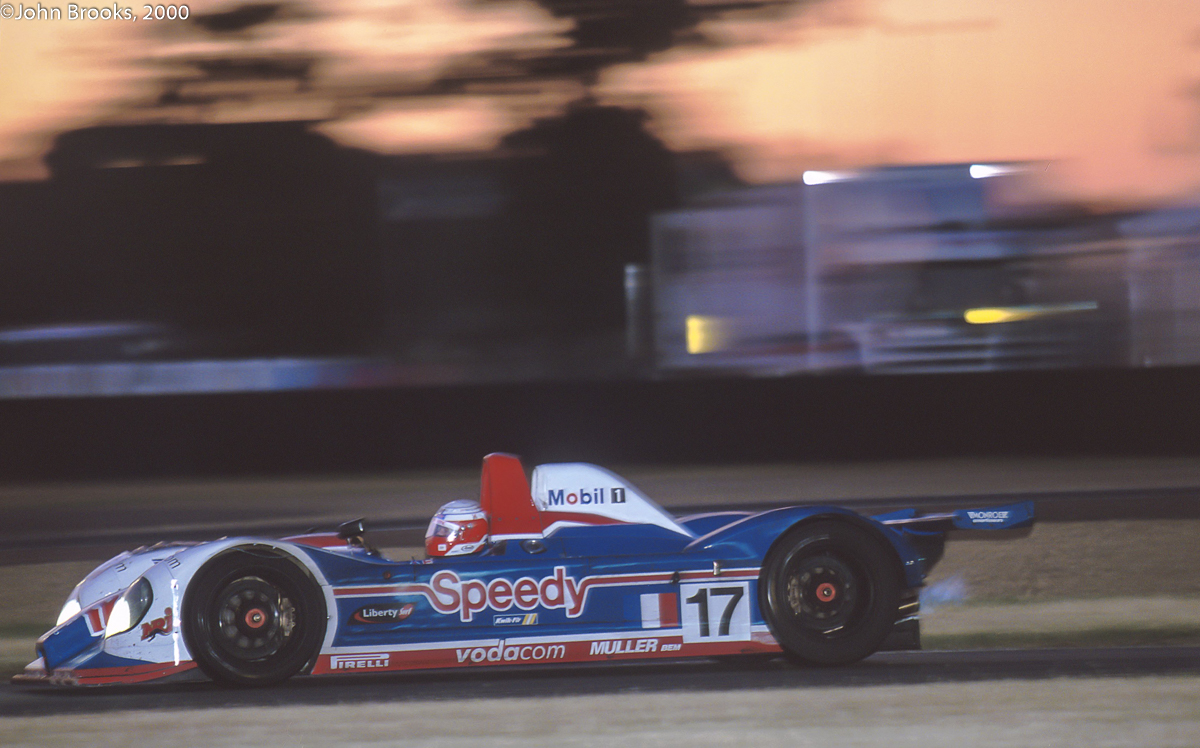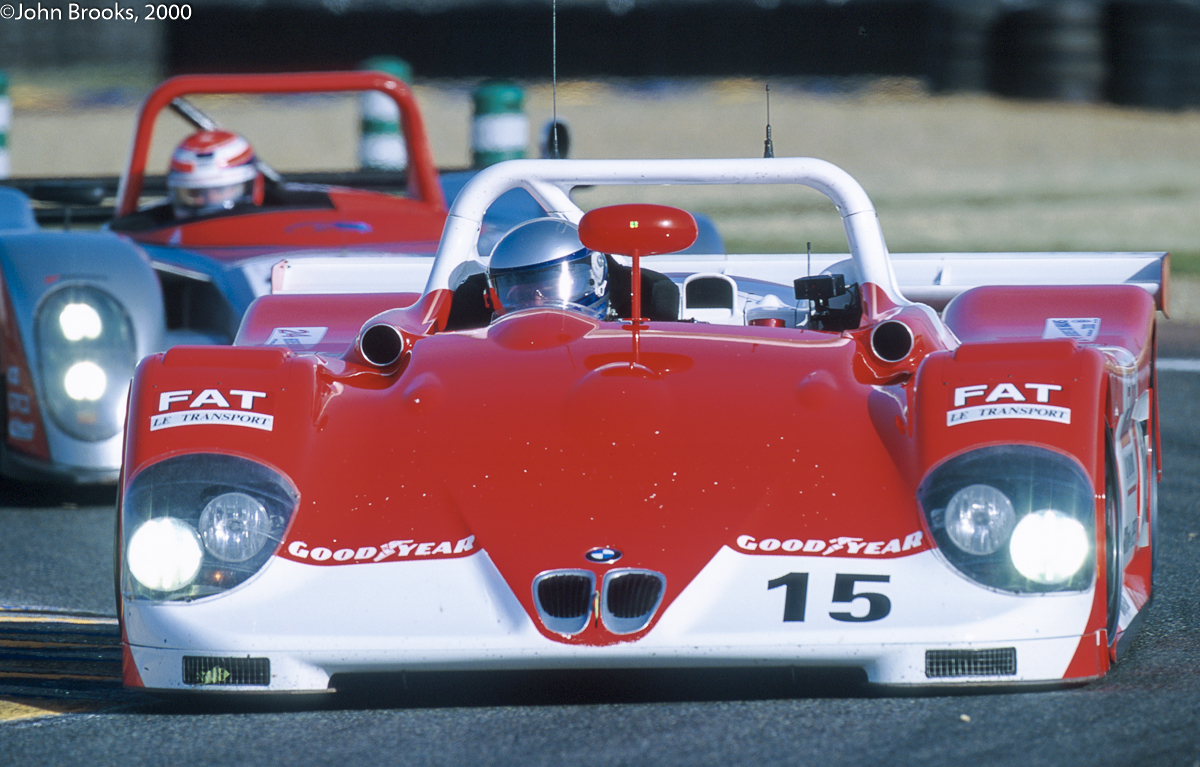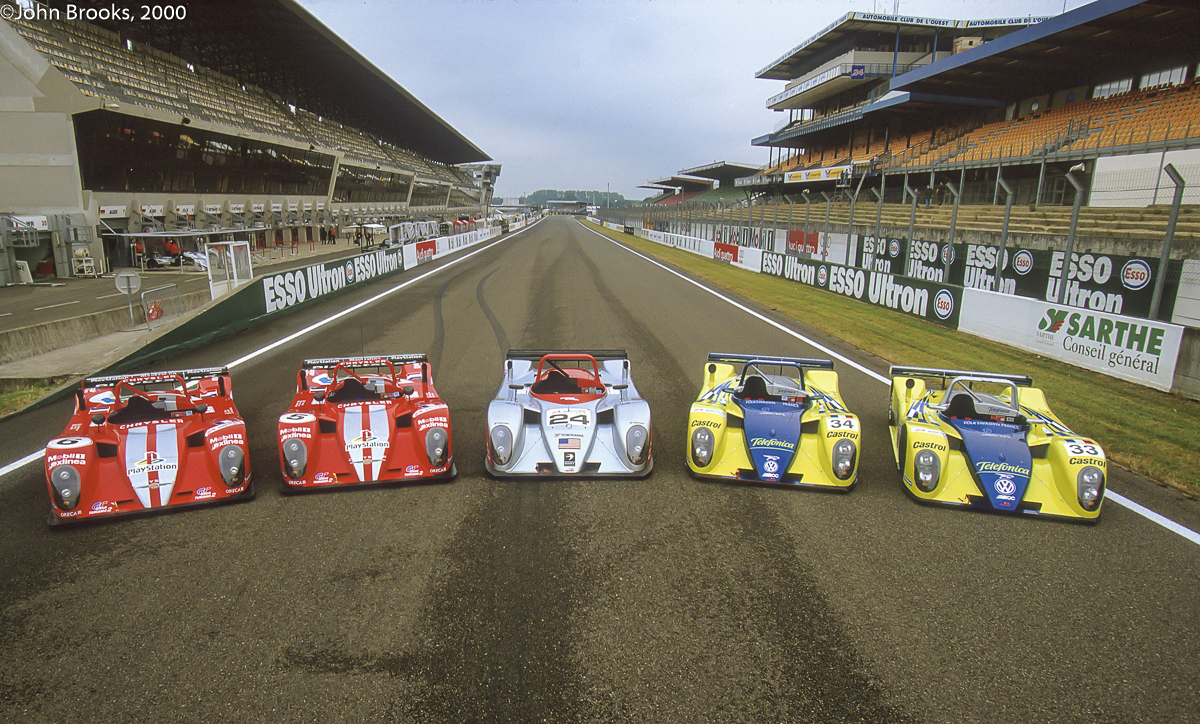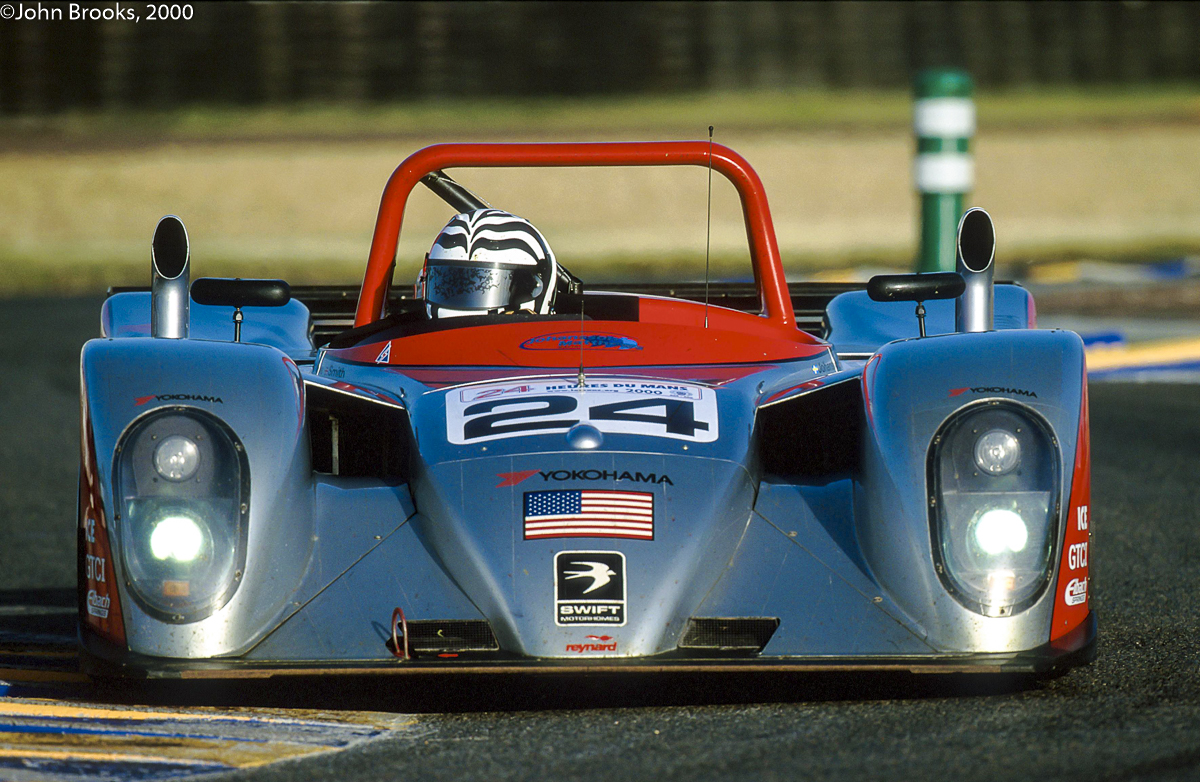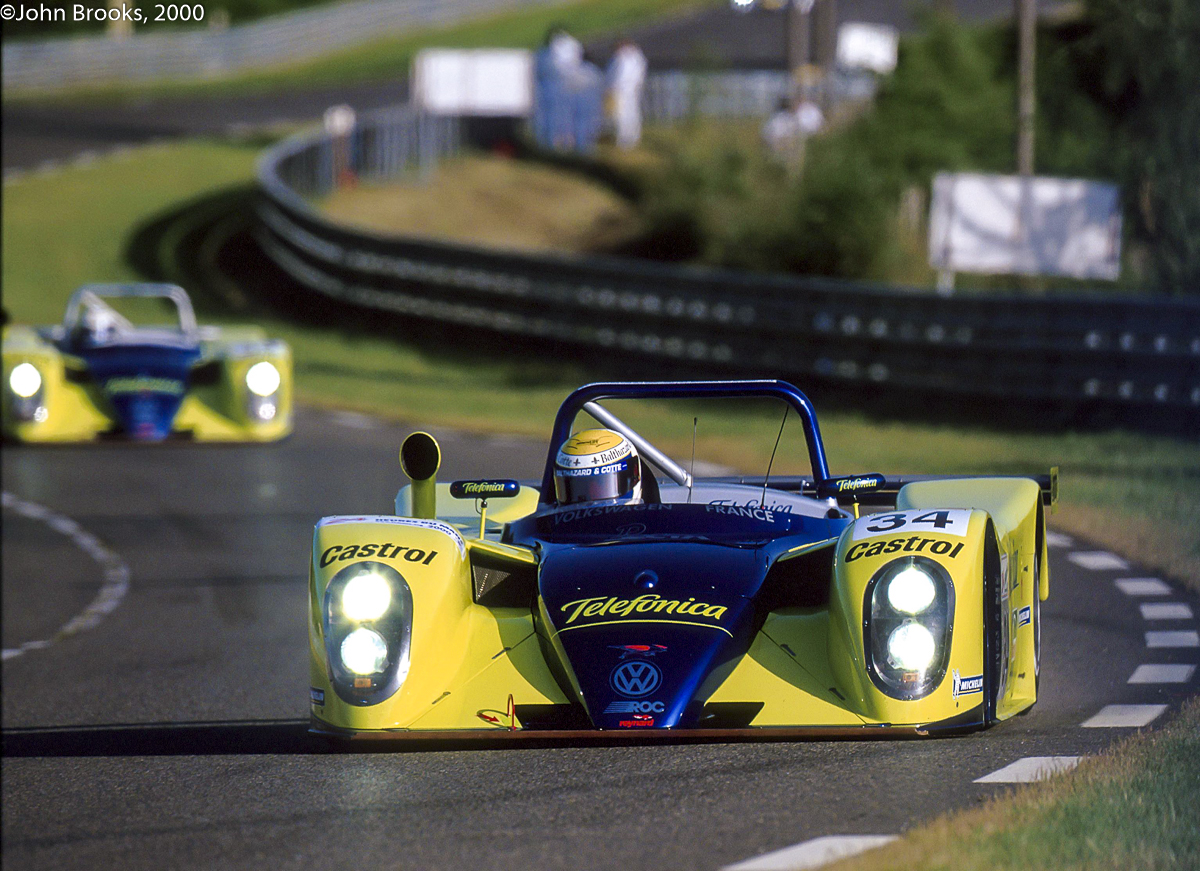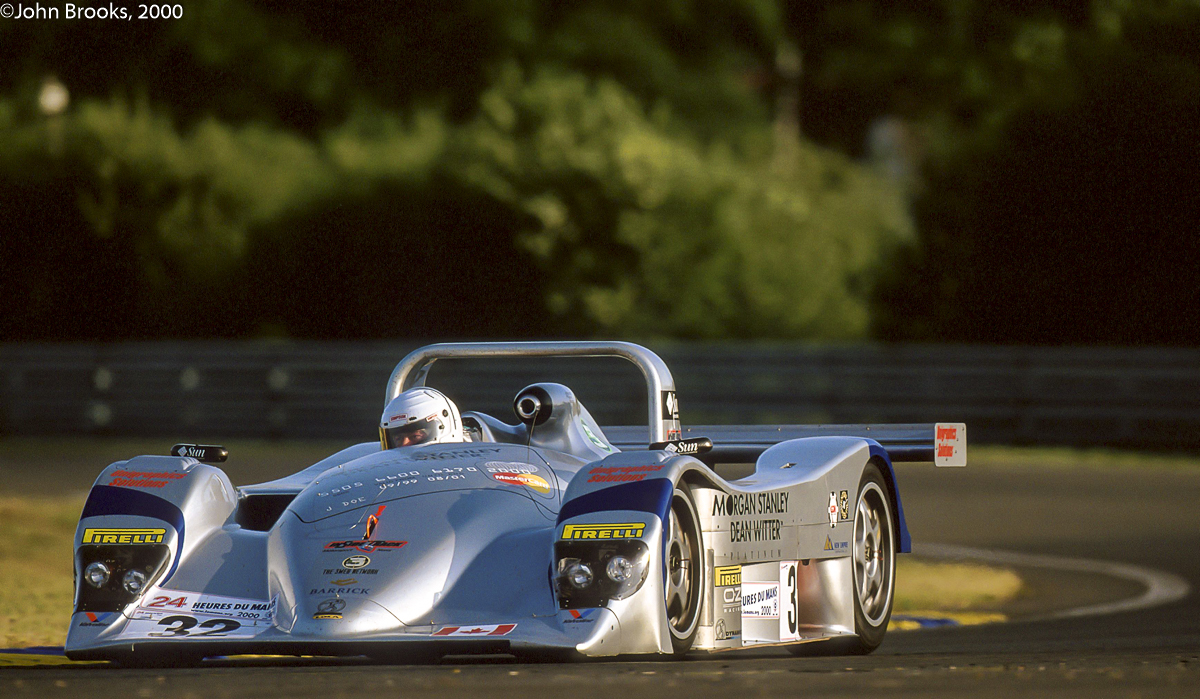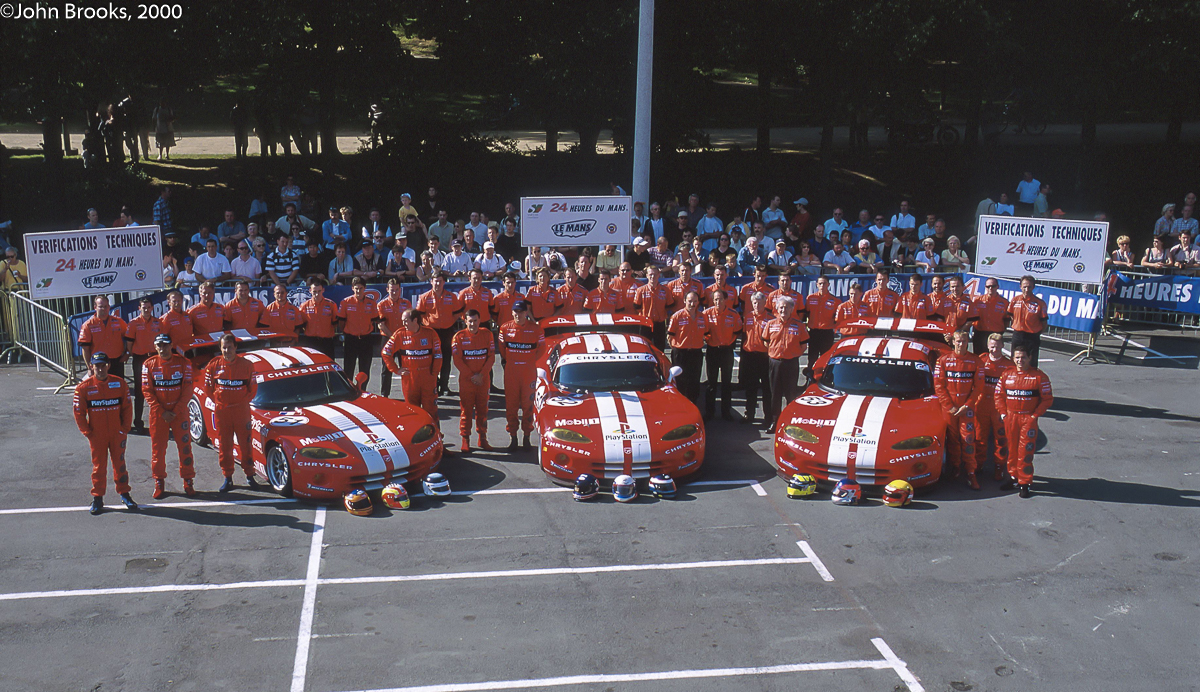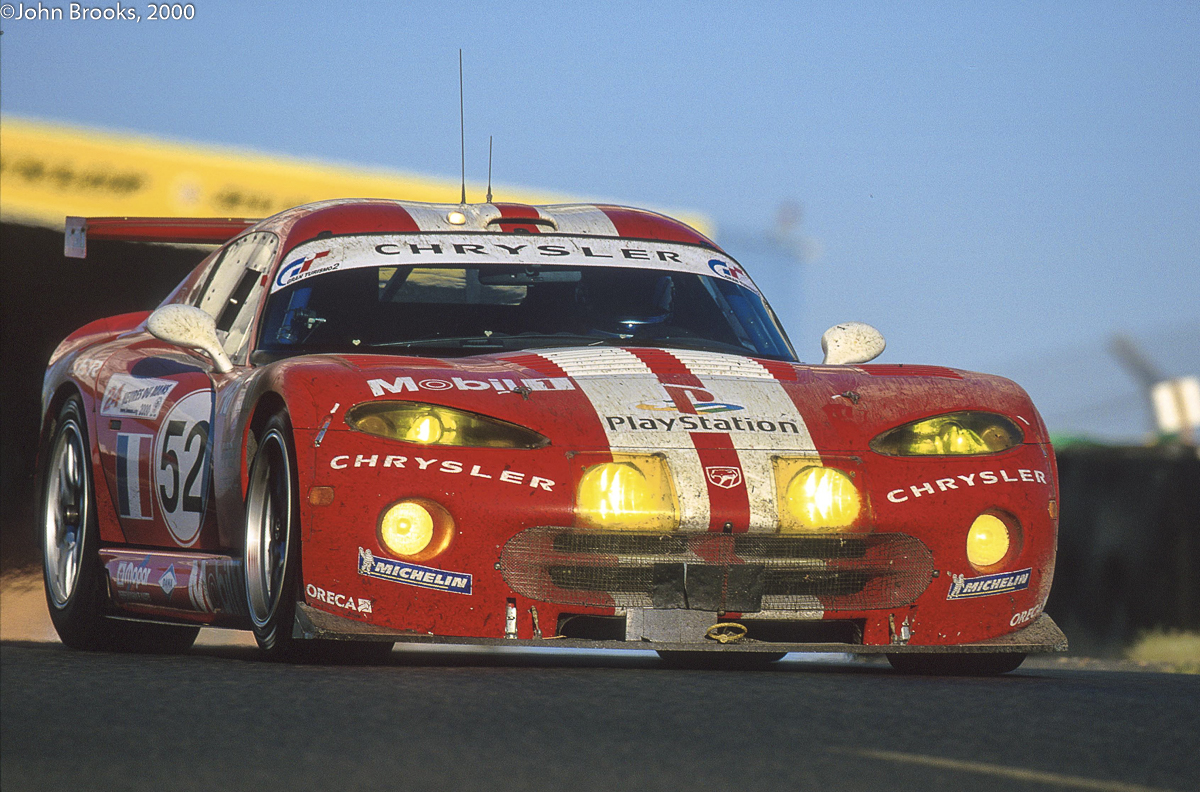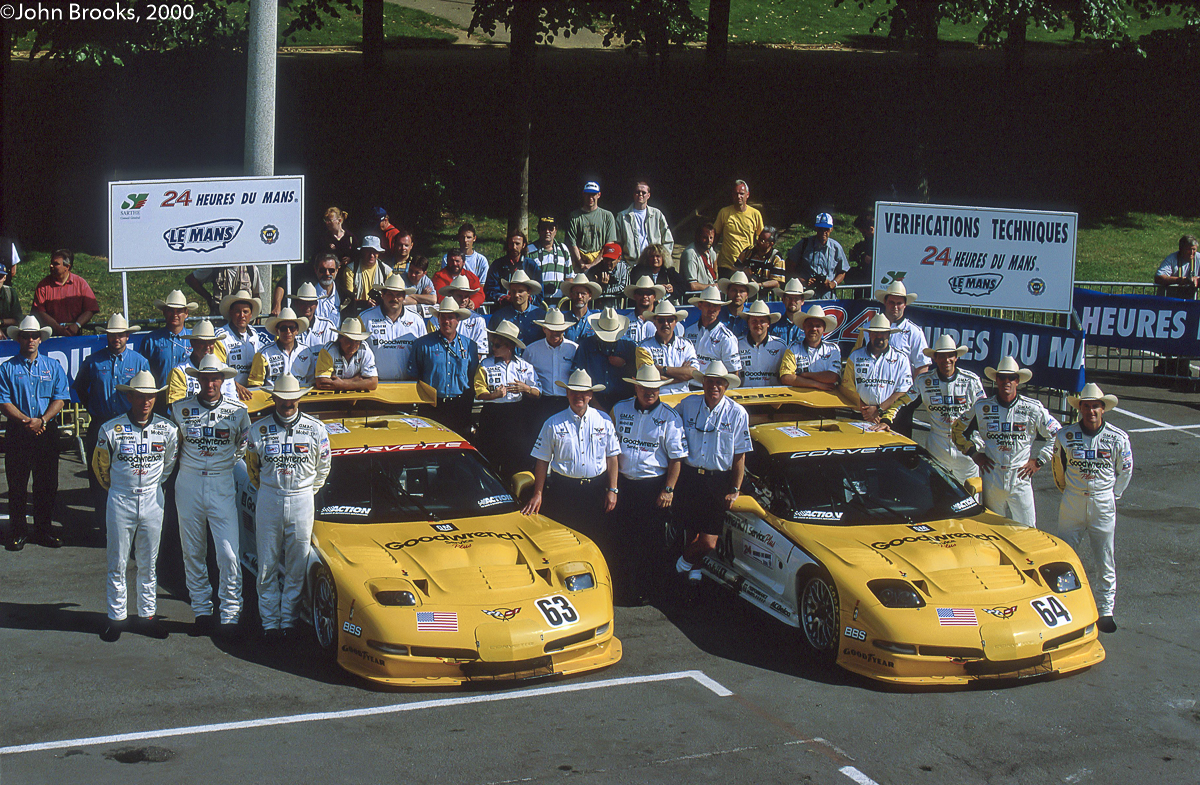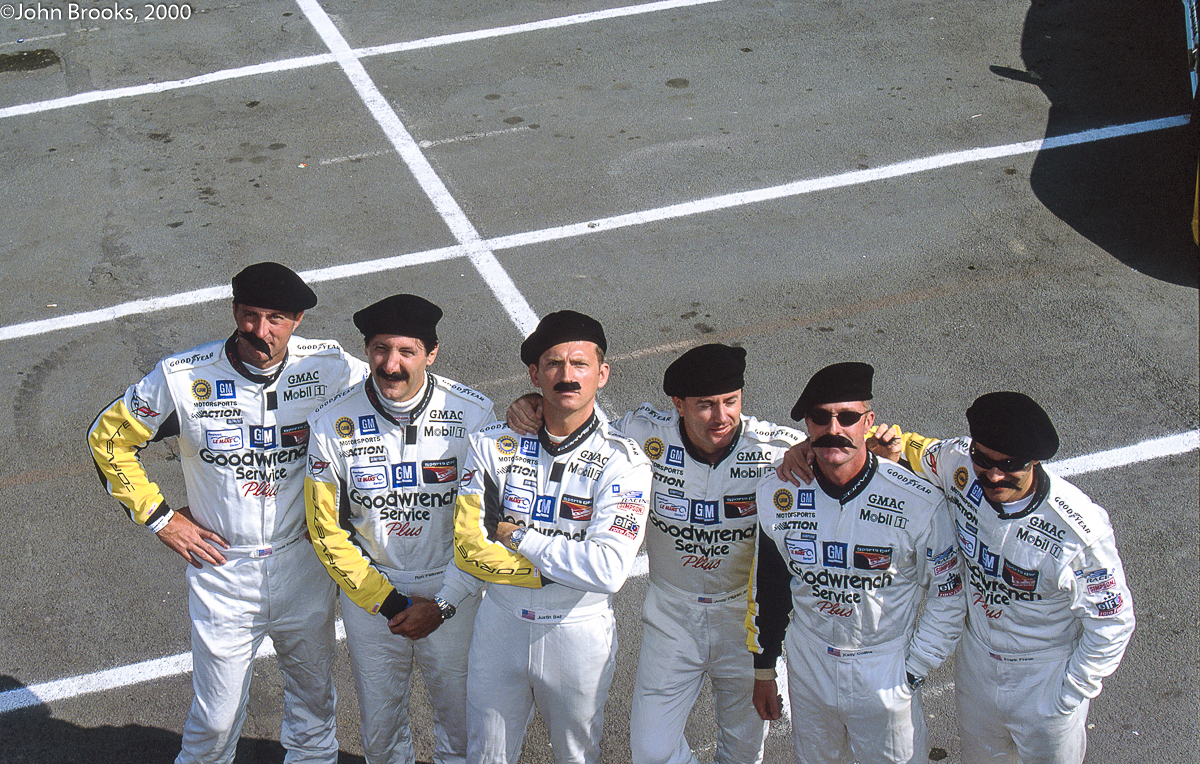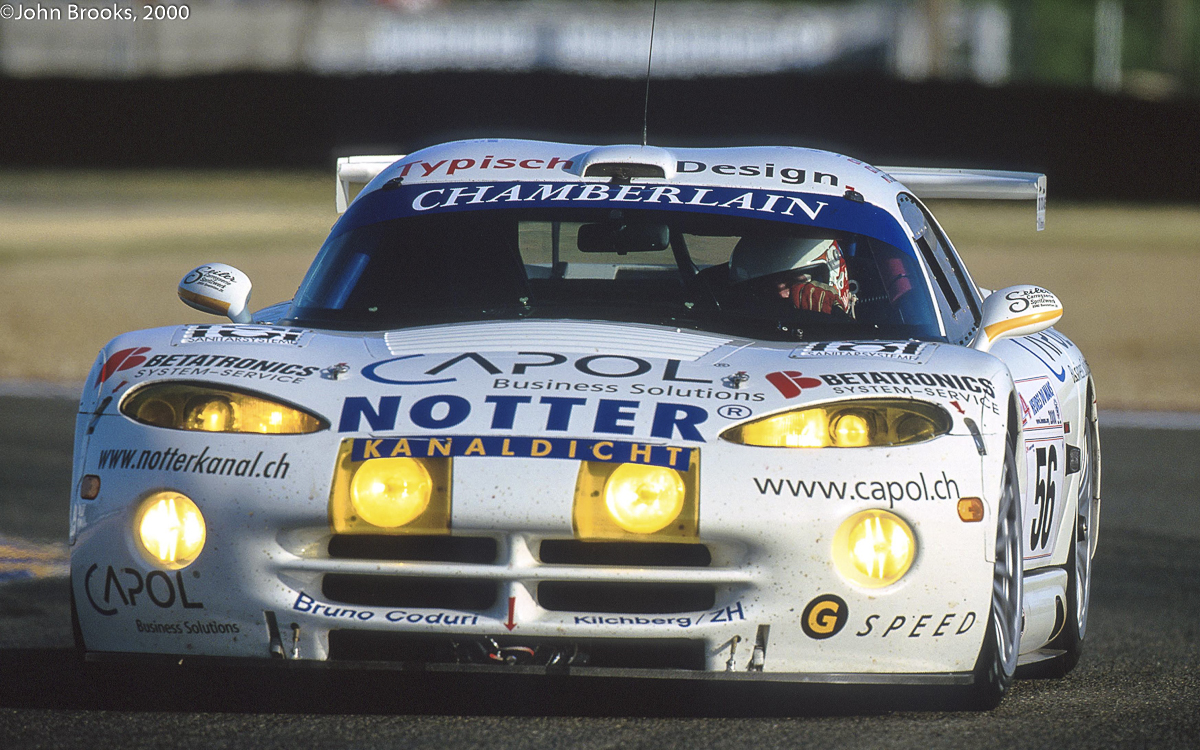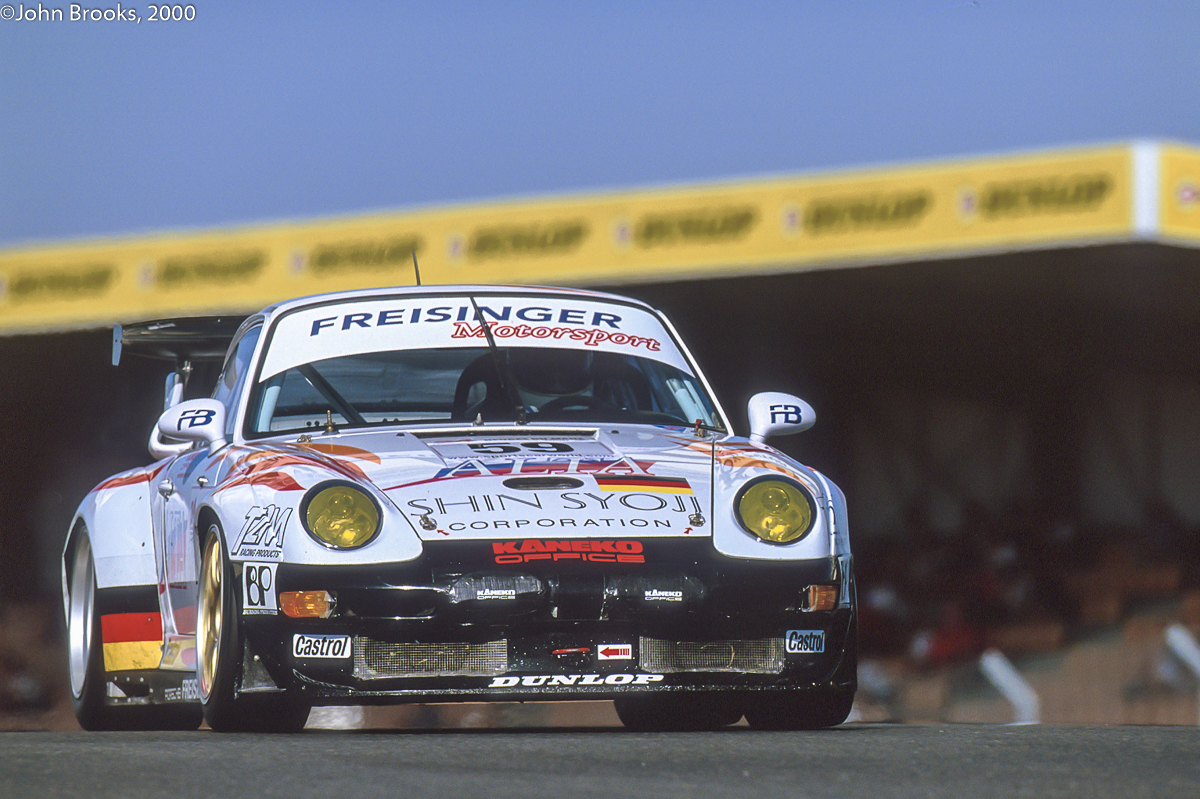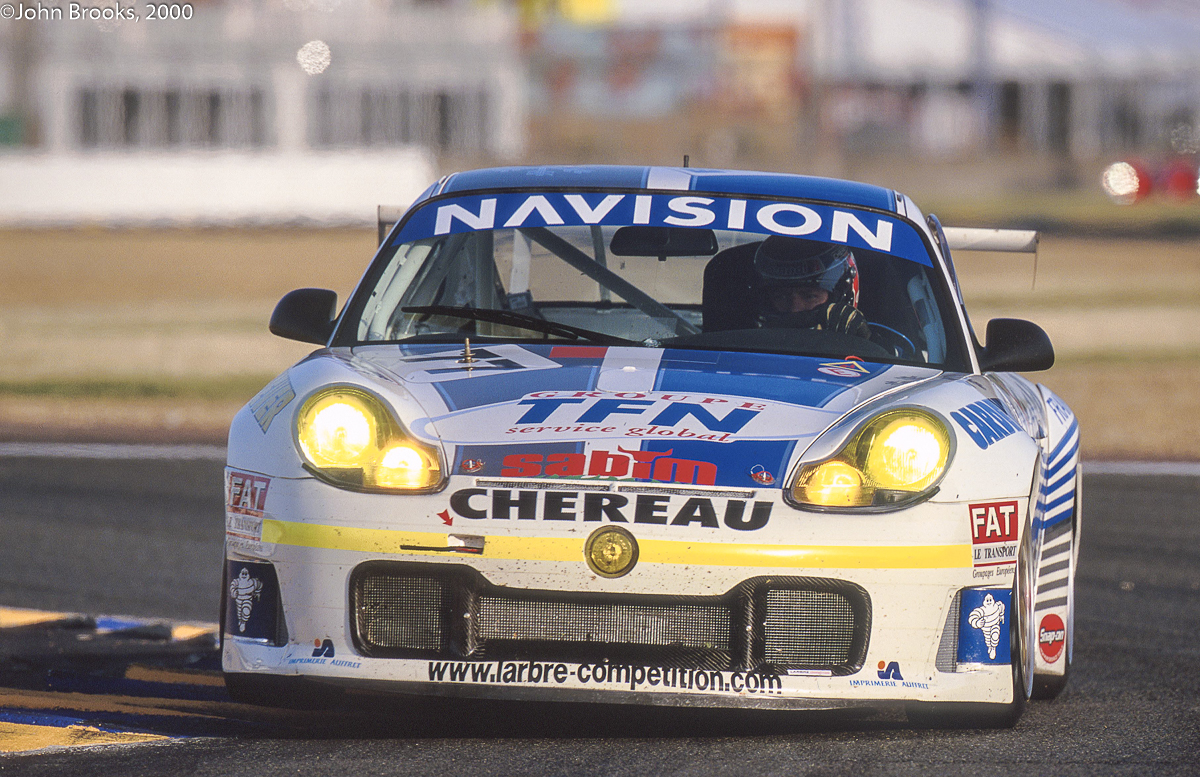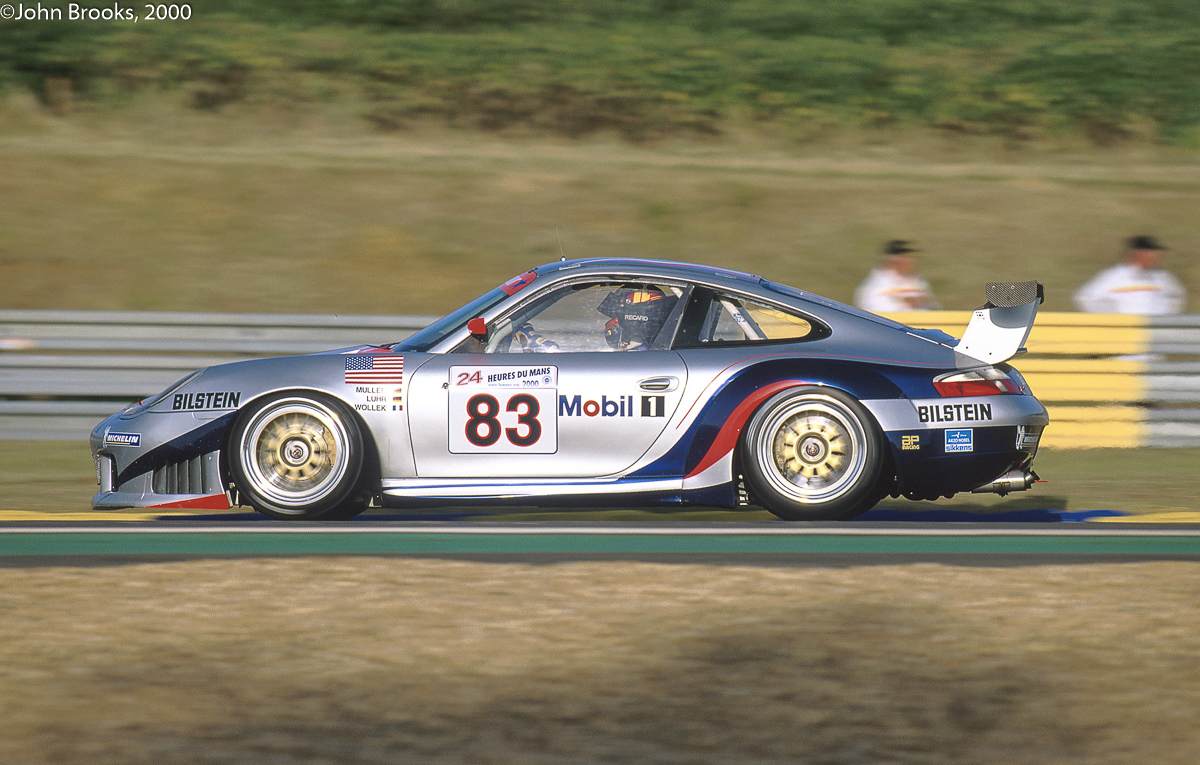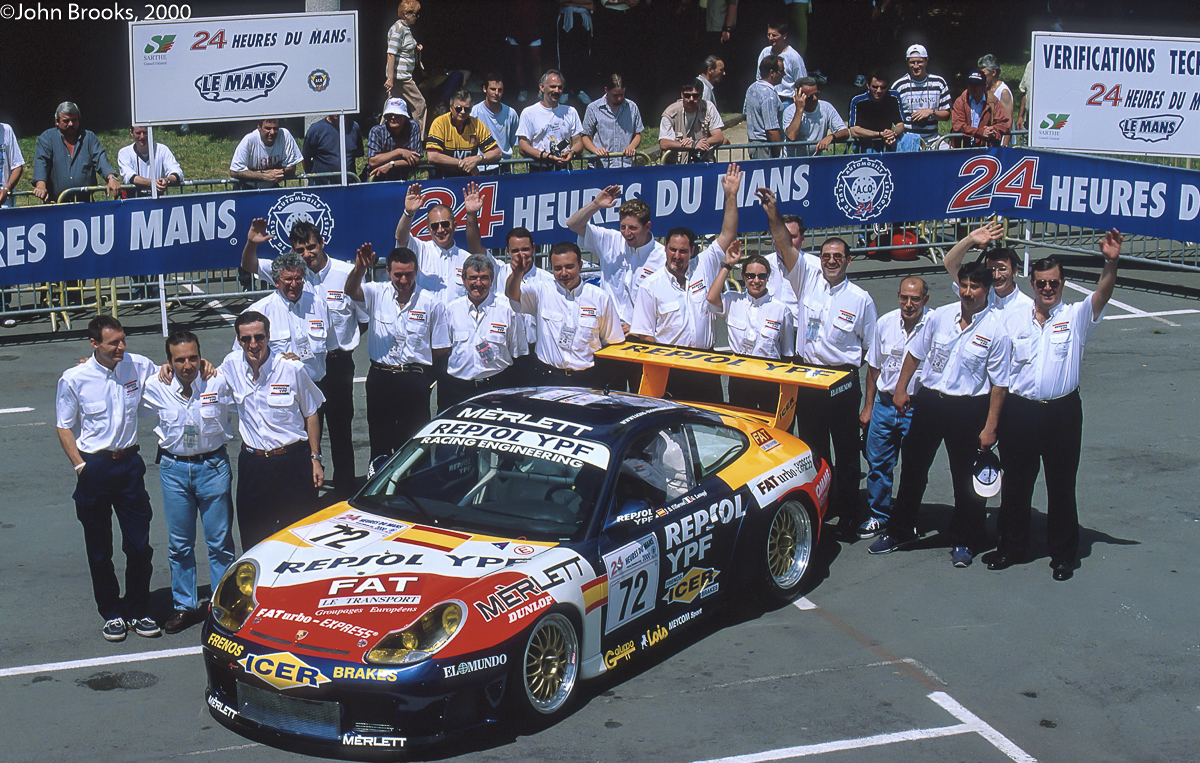The 2000 24 Hours of Le Mans was the first chapter in the best seller that became Audi’s story at La Sarthe, the book is now finished, at least the first volume is. Who knows what might happen in the future?
And yet the Le Mans universe is a very different place these days from that of sixteen years ago. Then, as now, there were four classes, with factory entries but there the similarities end.
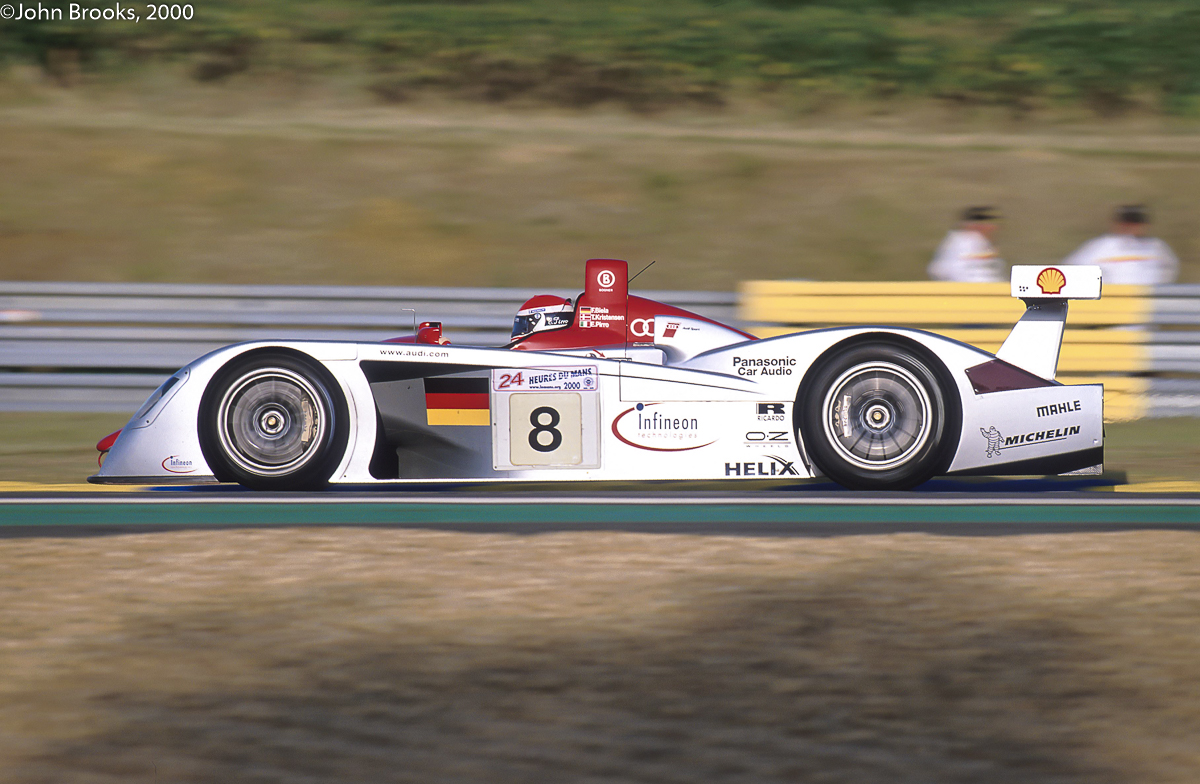
1998 and 1999 had seen high profile and high budget manufacturer projects at Le Mans from Toyota, Nissan, Mercedes-Benz, BMW and Porsche, with Audi joining in with their twin pronged approach featuring both open and closed prototypes for the latter year.
All of the above manufacturers left the House for 2000 except Audi who took on board the lessons from their comparative failure in 1999. Their answer was to create a new car which would turn into the benchmark for endurance racing in the first years of the 21st Century, the Audi R8.
First appearing at Sebring in the 2000 edition of the 12 Hour classic, it romped away to an easy victory, leaving rivals in no doubt as to the scale of the task they would face, come June, at La Sarthe.
Rivals? Ah yes, it was as if the ACO had issued a distress call across the Atlantic to replace the departing Japanese and German outfits. In 1999 the American Le Mans Series was born and created a marketing opportunity for Detroit to match their products against the best. The opportunity was seized with both hands, not since George Patton’s Third Army had swung through Le Mans back in August 1944 had the Département de la Sarthe seen such a range of American firepower, although Bill Ford’s Armada in ’66 and ’67 ran Patton pretty close. Cadillac, Corvette, Dodge, Chrysler and Panoz represented Motor City and like Patton they were chasing the Germans. That however was where the analogy ends. George S. caught and beat his opponents………………
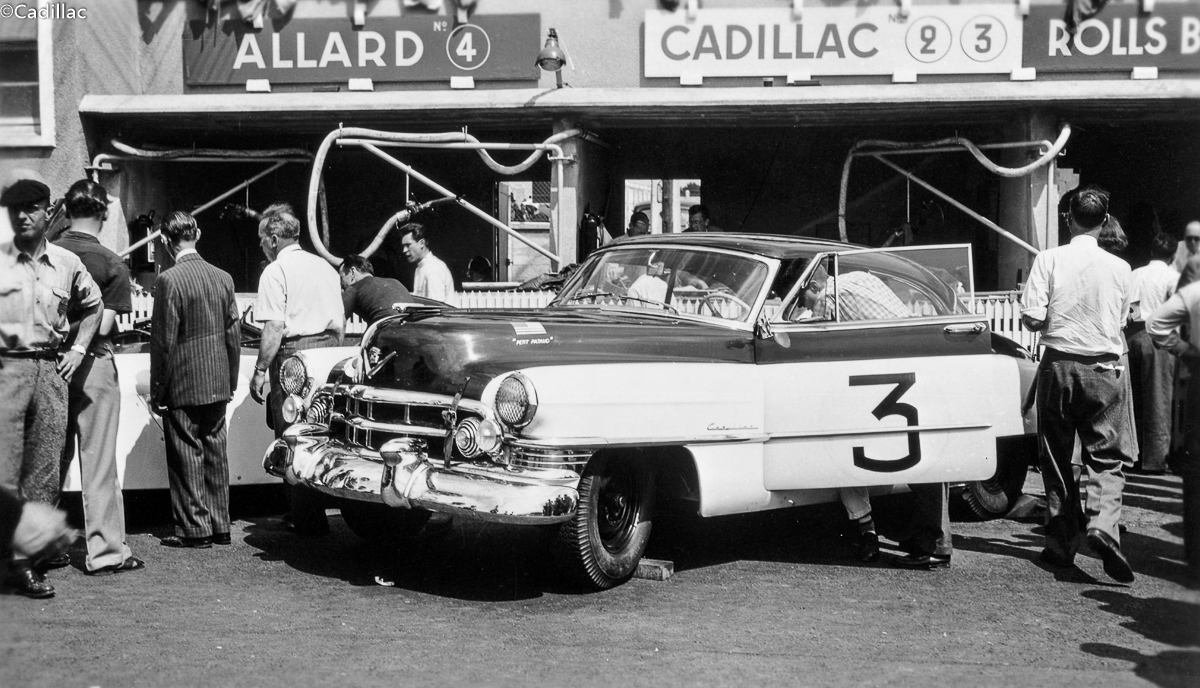 The rich history of Les Vingt-Quatre Heures du Mans allows it to have all manner of anniversaries each year, saluting some past heroes and their heroic deeds. In 1950 Briggs Cunningham stunned the French crowds by bringing two Cadillacs to La Sarthe, one an almost bog standard Coupé de Ville and the other a re-bodied streamliner, dubbed “Le Monstre.”
The rich history of Les Vingt-Quatre Heures du Mans allows it to have all manner of anniversaries each year, saluting some past heroes and their heroic deeds. In 1950 Briggs Cunningham stunned the French crowds by bringing two Cadillacs to La Sarthe, one an almost bog standard Coupé de Ville and the other a re-bodied streamliner, dubbed “Le Monstre.”
For 2000 Cadillac produced a conventional, in reality too conventional, open prototype running in the LM P 900 class. It was powered by a twin-turbo 4 litre V8, with Xtrac transmission and a chassis built by Riley & Scott. The aim of the project was to take an overall win in 2002 to coincide with Cadillac’s centenary. The whole project fitted in with GM’s attempt to change the brand’s perception of providing luxury barges to retired folk, the customer base was eroding with the passing of the years. That bit of the plan has, at least, happened, the 2002 LM-win did not.
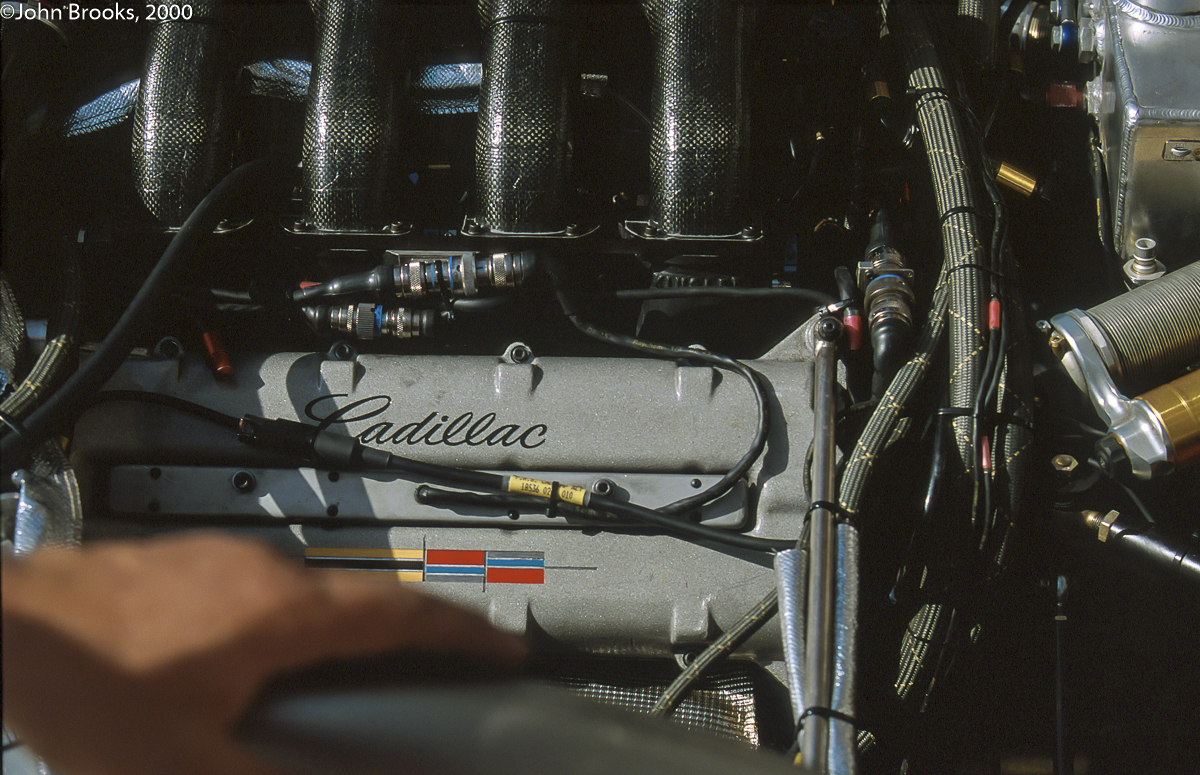
A total of four Cadillac Northstar LMPs were entered, two for Team Cadillac which was created by Wayne Taylor out of Doyle-Risi Racing. Two cars were entrusted to the French DAMS outfit. However it was clear from the outset that these cars would not be competitive against the Audi squad, so expectations were managed down with “development year” talk. Marketing created a smokescreen with an infra red based camera system that was mounted in the car’s lights but no one was fooled, the whole project was seriously under-cooked and might have been competitive a few years earlier but the likes of Toyota, BMW and now Audi had moved the game on, massively.
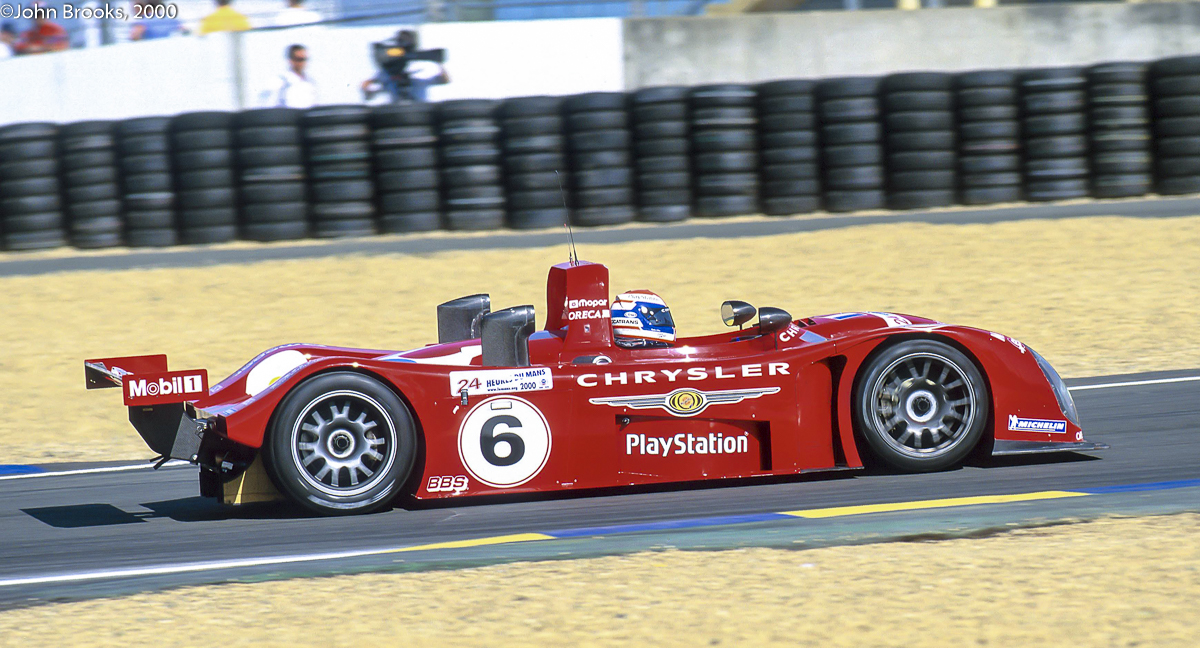
Also with ambitions to win the 2002 Le Mans 24 Hours outright was Chrysler. As part of the journey to that destination they had enlisted their French racing partners, ORECA, who had run the successful Viper programme for them. They had purchased two new Reynard 2KQ chassis and shoehorned the 6 litre V8 into the rear. In reality no matter what they or anyone else did they stood little chance of success in the face of the Audi steamroller. The investment in new technology from Ingolstadt would dwarf the efforts from Detroit.
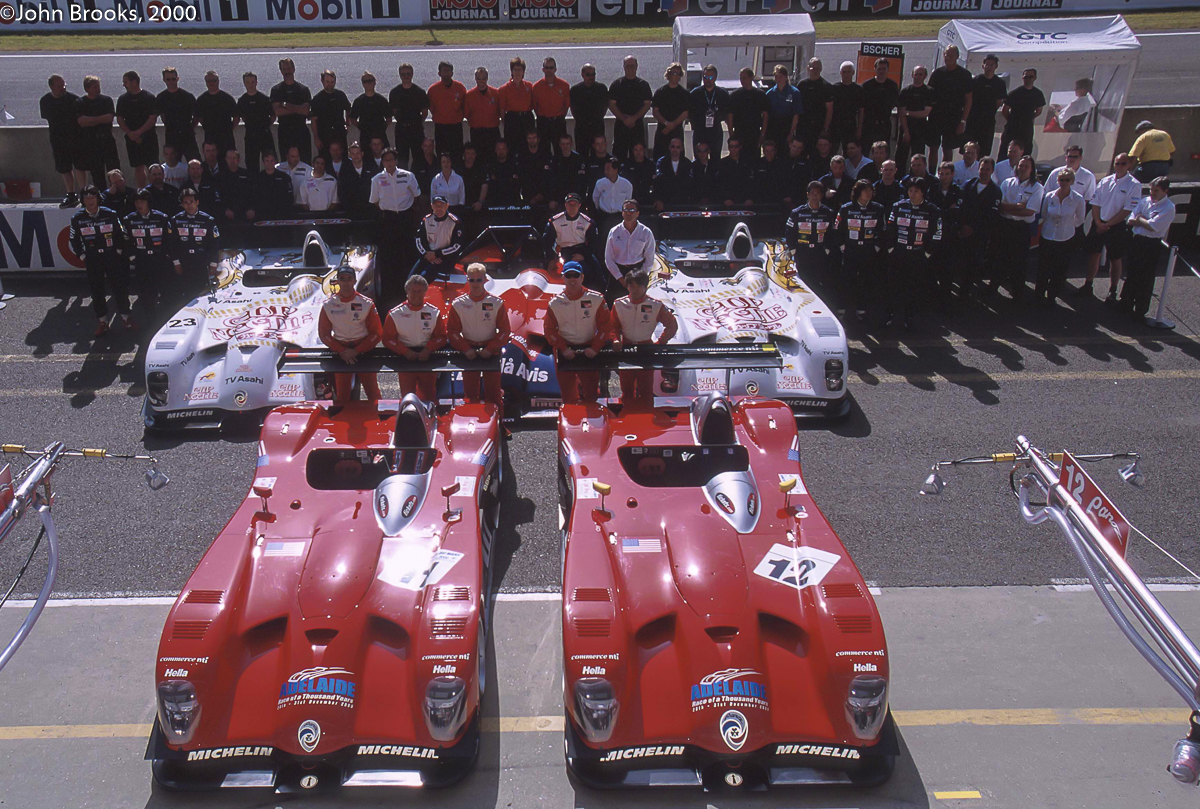
Ford were represented by proxy in the shape of Panoz LMP-1 Roadster S with the rumbling 6 litre V8s and their unusual configuration, the driver sitting behind the engine. There were two factory cars for Panoz Motorsport managed by the old lag, David Price.
There were two Roadsters from TV Asahi Team Dragon with Kazumichi Goh heading up the effort.
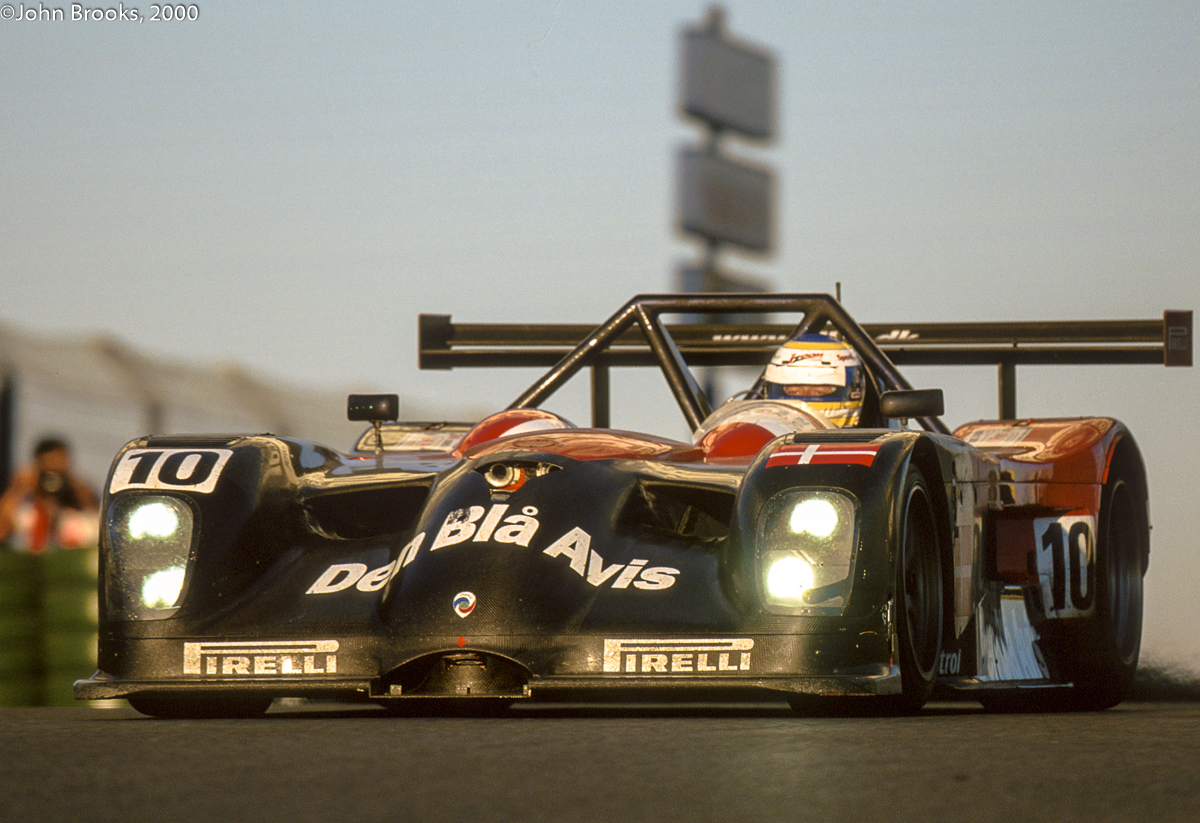
The final Panoz was that of the Danish outfit Den Blå Avis, which was a regular runner in the Sports Racing World Cup.
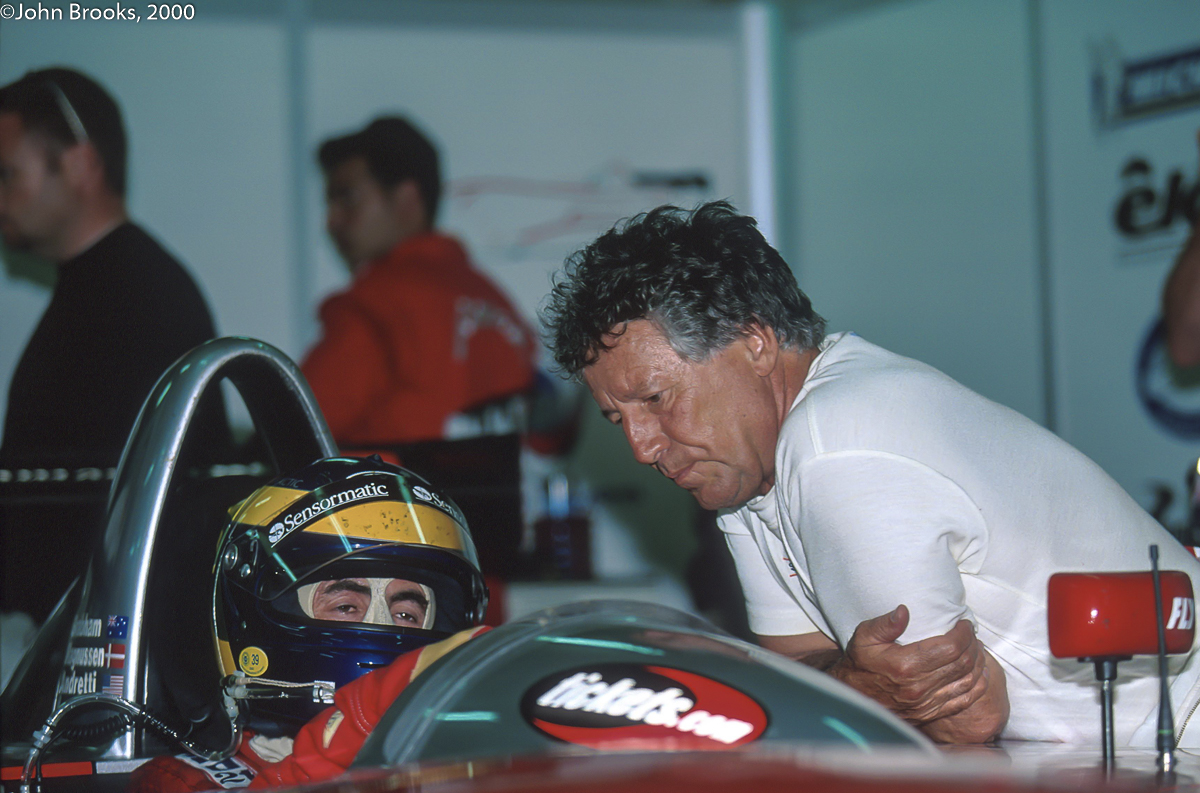
Another American legend to come back to Le Mans, was Mario Andretti. At the age of 60 he was rolling the dice one last time to see if he could win the one major race that had eluded him in his long and distinguished career.
Also crossing the Atlantic from the ALMS was the Team Rafanelli Lola B2K/10 with Judd power. This was a factory supported effort and was expected to fast but possibly fragile.
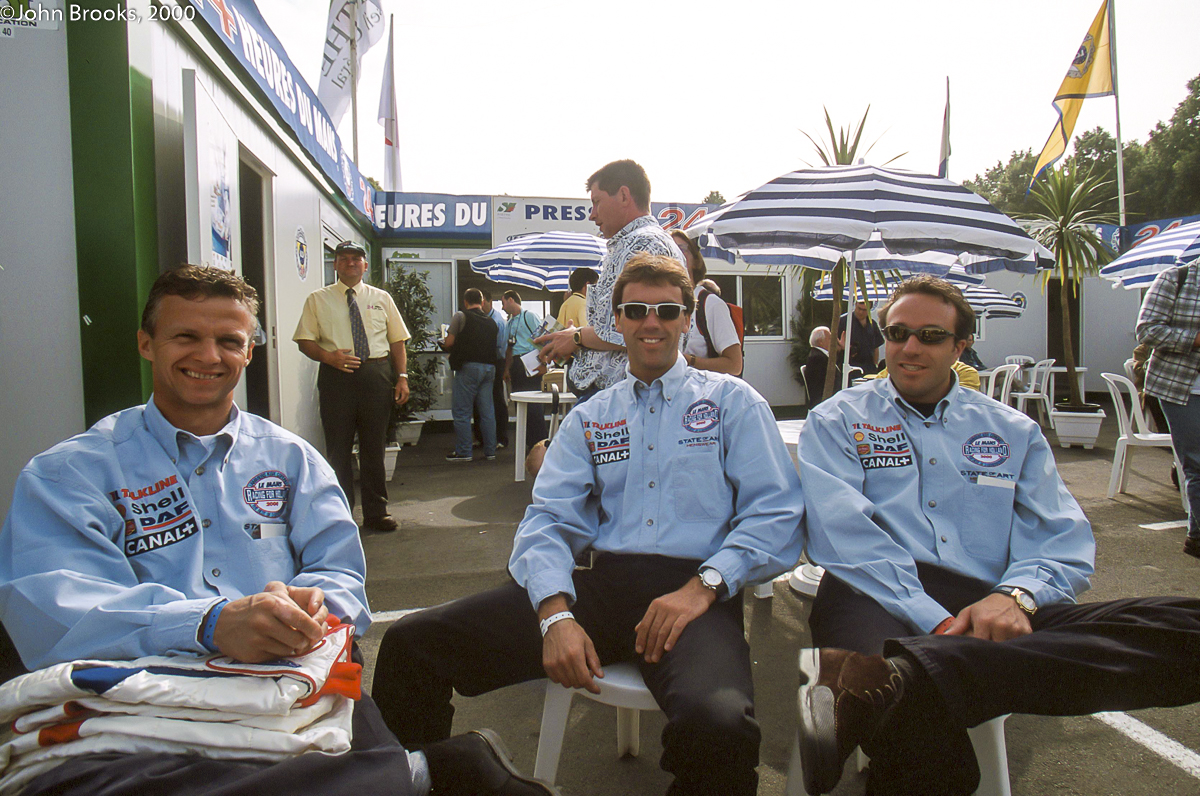
Another fancied Lola was the Konrad Motorsport example for the Dutch trio, Jan Lammers, Peter Kox and Tom Coronel. From this entry has grown the huge Dutch support for Le Mans. The Racing for Holland team followed on with the Drinking for Holland close behind or maybe that came first, oaks from acorns. Next year will see Lammers and the Dutch back at the 24 Hours, will he have a similar impact?
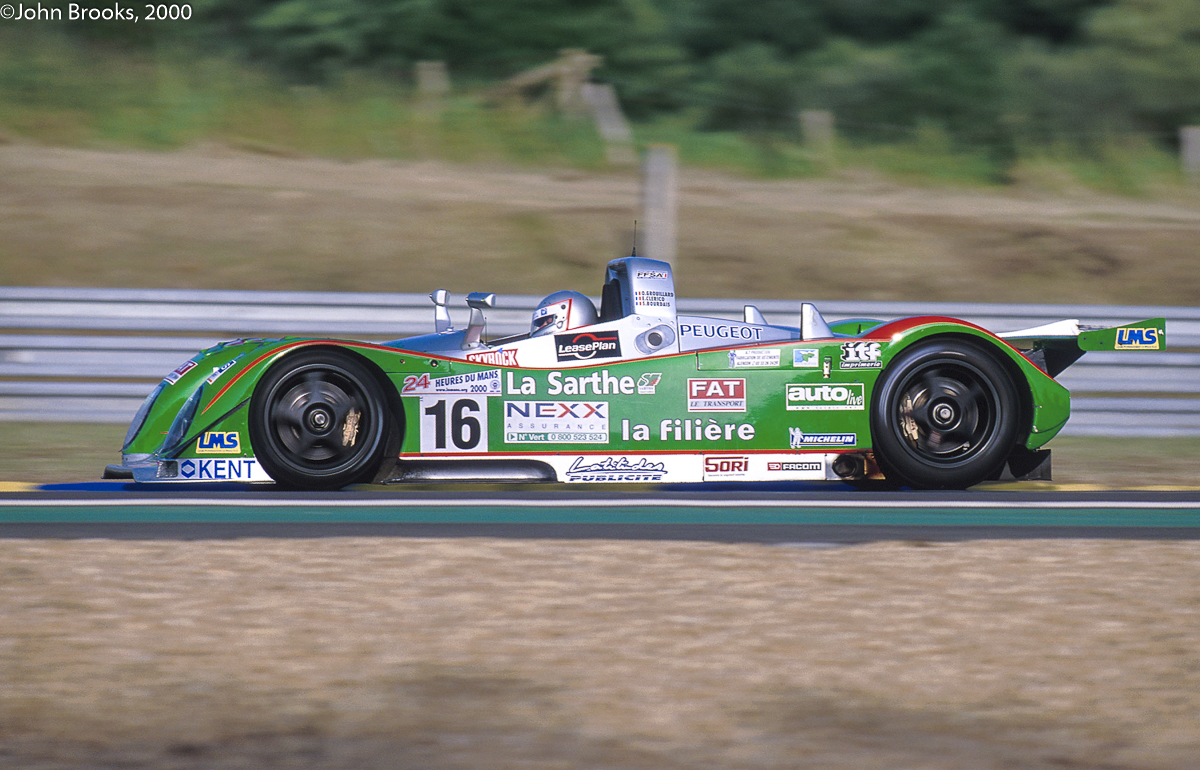
Peugeot were also represented at Le Mans 16 years ago. Henri Pescarolo, a four time winner and all round legend, had finally retired, so was now on the pit wall leading his Pescarolo Sport outfit running a Courage C52 powered by V6 turbo from the French manufacturer. A bit of a dark horse.
A second Courage was Judd powered and also French run but was not expected to shine in the face of the big budget outfits.
Keeping up the tradition of the privateer at the top table was Thomas Bscher’s BMW V12 LM. The team and car had finished a fantastic 4th overall in 1999, so they were quietly confident of being around at 4.00pm on Sunday.
Matching the Panoz contingent numerically was Reynard as there was also five examples of its prototype 2KQ on the Le Mans grid.
Arguably the best of these was the Judd powered Johansson Matthews Racing example.
Two of the Reynards were entered in the fledgling LM P675 class with werks turbo engines from Volkswagen, based on a rally unit that had run into homologation problems. They had limited opposition in what was easily the weakest class in the race.
The main challenge to the VWs in LM P675 was expected to be from the Multimatic Motorsport Lola powered by a V6 Nissan engine.
Which brings us neatly to the second part of the American Invasion. The LM GTS class would feature a titanic struggle between Le Mans returnees, (first time was 40 years previously, once again with Briggs Cunningham) Corvette Racing and the reigning champs, Viper Team ORECA.
The two camps had already gone toe to toe at the Daytona 24 Hours earlier in the year. Viper came out on top that time but their winning margin was just 30 seconds and they knew that it could have easily gone either way.
The three Vipers would be opposed by two Corvettes, real Detroit heavy metal, as 8 litre V10 battled 7 litre V8, Ali-Frasier-style, a classic Le Mans encounter.
Doug Fehan’s Corvette team have graced the 24 Hours of Le Mans ever since 2000, but it could have gone horribly wrong that first year. This lot look like they have just escaped from the set of ‘Allo ‘Allo………………………
The supporting cast to the factories in LM GTS were three Vipers, one entered under the Team Goh banner but in reality a Chamberlain Engineering effort.
2000 also saw the final hurrah for the Porsche 911 GT2 at Le Mans, Freisinger and Konrad trying to match the Vipers and Vettes.
The LM GT category was a Porsche monopoly, all 12 entries being the 996 GT3 R models. There were two examples that were head and shoulders above the rest, Larbre Compétition was, as ever, proudly flying the Tricolour and had former winner Christophe Bouchut leading the challenge.
America’s best hopes in LM GT rested on the Dick Barbour Racing factory supported entry. Young German stars, Lucas Luhr and Dirk Müller were guided by Bob Wollek who would make his 30th and final Le Mans start that year, losing his life in a pointless road accident the following March.
Race Engineering was the first Spanish team to enter Le Mans and was under the leadership Alfonso de Orléans-Bourbon, Duke of Galliera, who raced at Le Mans previously. The team has gone on to great success in single seater racing with many stars such as Sebastian Vettel, Justin Wilson and Lucas Di Grassi coming through the ranks in their cars.
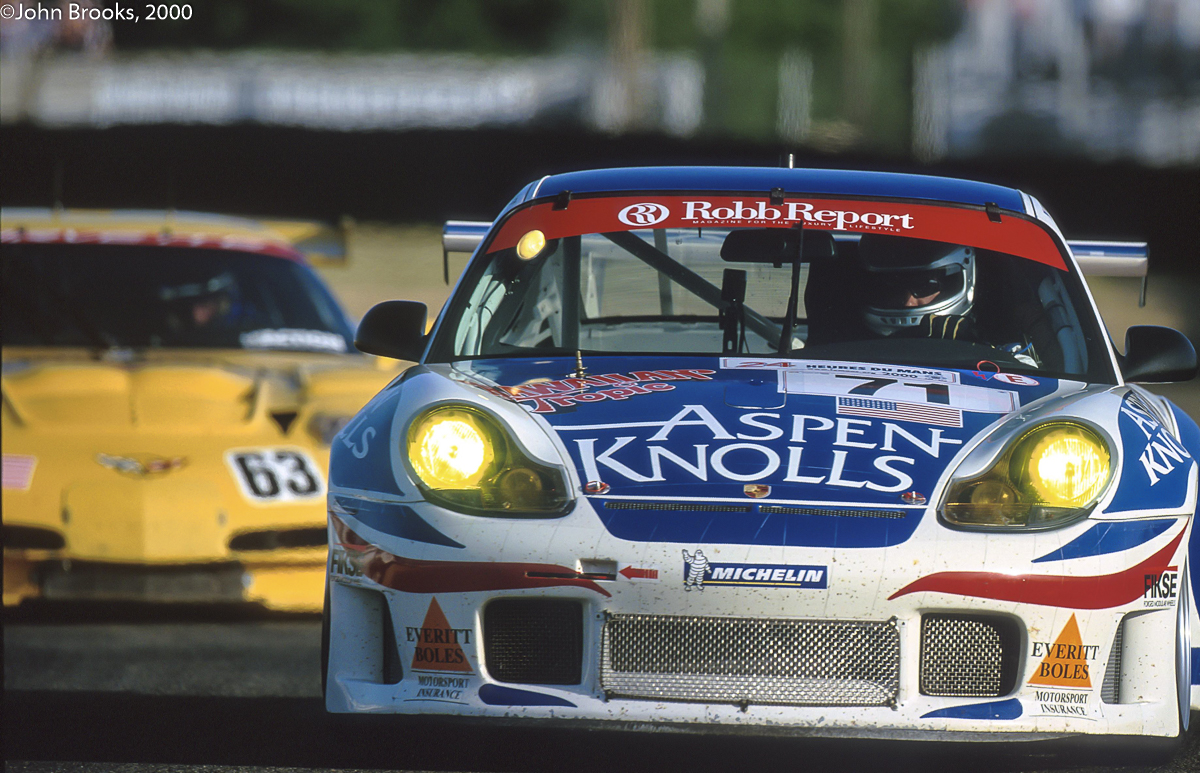 The forecast was for a scorching hot weekend, conditions that come to that part of France sometimes in June. Would the favourites win or as they often do, would they stumble along the road? Find out in part two later this month.
The forecast was for a scorching hot weekend, conditions that come to that part of France sometimes in June. Would the favourites win or as they often do, would they stumble along the road? Find out in part two later this month.
John Brooks, December 2016

